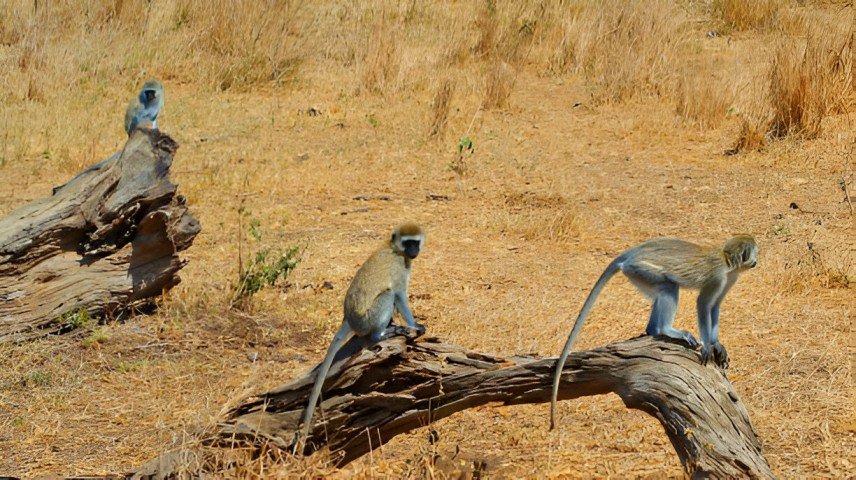Welcome to Tanzania, a land of stunning landscapes, vibrant cultures, and unparalleled wildlife experiences. If you’re dreaming of an unforgettable safari trip, Tanzania is your ultimate destination. From the vast plains of the Serengeti to the breathtaking Ngorongoro Crater and the hidden gems in between, Tanzania offers some of the most amazing safari adventures in Africa. In this travel guide, we’ll take you through everything you need to know to plan your ultimate wild safari in Tanzania.
1. Understanding Tanzania’s Safari Regions
Tanzania is home to several national parks and conservation areas, each with its unique landscapes and wildlife:
- Serengeti National Park: Famous for the Great Migration, where millions of wildebeest and zebras traverse its plains, the Serengeti offers stunning wildlife viewing year-round.
- Ngorongoro Crater: A UNESCO World Heritage site, this volcanic caldera is teeming with wildlife, including lions, elephants, and rhinos, making it one of the best places for game viewing in Tanzania.
- Tarangire National Park: Known for its large elephant herds and iconic baobab trees, Tarangire provides fantastic wildlife sightings, particularly during the dry season.
- Lake Manyara National Park: Famous for its tree-climbing lions and diverse birdlife, Lake Manyara offers panoramic views of the Great Rift Valley.
- Ruaha National Park: Less frequented by tourists, Ruaha is known for its spectacular wild landscapes, diverse wildlife, and beautiful river.
- Selous Game Reserve: One of the largest wildlife reserves in Africa, Selous offers a pristine wilderness experience, with opportunities for walking safaris and boat safaris.
2. Best Time to Go on Safari
The best time for a safari in Tanzania generally falls between June and October, during the dry season when wildlife is more easily spotted. However, the shoulder seasons (late May and November) can also be excellent times to visit, offering fewer crowds and lush landscapes. If your goal is to witness the Great Migration, plan your trip for June to August, when wildebeest and zebras are in the Serengeti.
3. Choosing the Right Safari Experience
There are various ways to experience a safari in Tanzania, depending on your preferences and budget:
- Guided Safari Tours: Joining a guided tour offers convenience and expert knowledge. Most tours include transport, accommodations, and meals.
- Self-Drive Safaris: For the adventurous traveler, renting a vehicle and driving through parks can provide flexibility and a sense of freedom.
- Walking Safaris: Experience nature up close with a walking safari led by a trained guide. This allows you to truly connect with the wilderness.
- Hot Air Balloon Safaris: For a unique perspective, consider a hot air balloon flight over the Serengeti at sunrise. The breathtaking views and wildlife sightings from above are unforgettable.
4. What to Pack for Your Safari
Packing wisely is essential for having a comfortable safari experience. Here’s a checklist of essentials:
- Clothing: Lightweight, breathable clothing in neutral colors (like khaki and green) to blend in with the environment. Layering is recommended, as temperatures can vary dramatically between day and night.
- Footwear: Comfortable, sturdy walking shoes for safaris and sandals for relaxing at your lodge.
- Accessories: A wide-brimmed hat, sunglasses, and sunscreen to protect yourself from the sun. Binoculars for wildlife spotting are highly recommended.
- Insect Repellent: To keep insects at bay during your trip, especially in the evenings.
- Camera Equipment: Bring a good camera with a zoom lens to capture the stunning wildlife and landscapes.
5. Wildlife Spotting Tips
While on safari, keep these tips in mind for the best wildlife sightings:
- Be Patient: Wildlife can be unpredictable. Spend time observing, and you may spot animals that aren’t immediately visible.
- Stay Quiet: Wildlife is easily startled by noise. Speaking in hushed tones allows you to enjoy the experience without scaring animals away.
- Look for Signs: Learn to look for animal tracks, droppings, and sounds. Your guide can help explain the signs of wildlife activity.
6. Cultural Experiences
In addition to wildlife viewing, consider incorporating cultural experiences into your safari adventure. Engage with the local Maasai people to learn about their traditional ways of life, visit local markets, or explore nearby villages for a more comprehensive understanding of Tanzanian culture.
7. Responsible Safari Practices
As a responsible traveler, consider the following practices to minimize your impact on the environment and local communities:
- Choose Eco-Friendly Operators: Support tour operators that prioritize conservation and local community engagement.
- Follow Park Rules: Respect wildlife by maintaining a
Conclusion
Embarking on a safari trip in Tanzania promises an adventure filled with breathtaking scenery, incredible wildlife, and cultural encounters that will last a lifetime. Whether you’re exploring the famed Serengeti, marveling at the Ngorongoro Crater, or discovering hidden gems like Tarangire and Lake Manyara, the wild heart of Tanzania awaits you. By understanding your options and planning ahead, you can tailor your safari experience to suit your dreams and budget. So pack your bags, book your safari, and get ready for an unforgettable journey into the wild!

